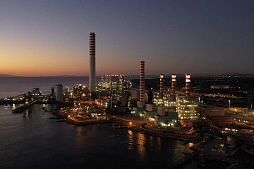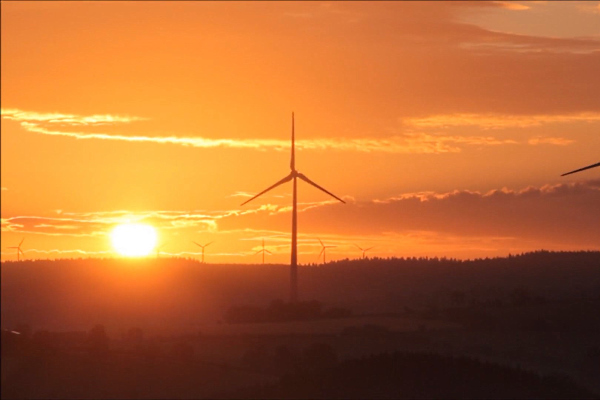After receiving the necessary documents (application form and project presentation), our team will try to review your request as soon as possible, and leading experts will offer the best options for project funding.
Oil from different suppliers will be delivered by 28 tankers ordered by PKN Orlen.
This became possible thanks to the modern oil terminals of Naftoport in Gdansk, which have been actively developing over the past years.
According to the former Minister of Economy of Poland Janusz Steinhoff, the current technical capabilities were created by Edvard Gierek, who realized the need to look for supplies outside the USSR in the second half of the last century.
In 2021 alone, Naftoport oil terminals received 266 tankers from all over the world.
During the period from January to November 2021, Poland imported almost 21.5 million tons of crude oil, of which 63.6% was from Russia. According to Mateusz Morawiecki, now the country is minimizing Russian energy supplies in order to completely abandon Russian oil by the end of the year.
This will become possible, among other things, thanks to the development of oil terminals in the Baltic Sea and new investments in this area.
Investments in Naftoport oil terminals changed history
Poland has the opportunity to receive crude oil from all over the world thanks to the Naftoport infrastructure located in Gdansk.It is Poland's window to the energy world. While the Swinoujscie LNG terminal has been hailed as the jewel in the crown of the country's gas independence, its big brother has provided Poland with opportunities to diversify its oil supplies for many decades.
Janusz Steinhoff recalls that the infrastructure for importing oil by sea began to develop even before the fall of the Berlin Wall. Even in those years, the authorities understood that Poland needed to diversify the Druzhba oil pipeline, which supplied us with Soviet resources.
As early as the 1970s, the country was importing oil from Iran and owned its own Polish tankers carrying this oil.
In fact, the construction of Poland's energy independence from the Soviet Union was initiated by Gierek. In early May 1971, a decision was made to conclude a contract for a decade of Western oil supplies with British Petroleum.
This happened before the construction of the Gdansk oil refinery.
The construction of Naftoport began a year later, and in 1975 an oil infrastructure was launched in Gdansk for supplies from the USSR. At the same time, six Polish tankers were being built, which were supposed to meet the needs of Poland in the amount of 9 million tons per year from Germany and Japan. The first batch of crude oil entered the Polish People's Republic from the United Arab Emirates, following from Libya, which was ruled by Muammar Gaddafi.
Today, Naftoport has all the necessary technical resources to supply Poland with oil from the sea, and the Gdansk and Plotsk oil refineries are connected to it by pipelines.
The oil market is different from the gas market, where infrastructure links play a key role. Large capacity tankers deliver raw materials from different parts of the world. European experts are absolutely sure that with the help of the current oil terminals and new investments, Poland can cut itself off from Russia.
In 2020, Naftoport had a transshipment capacity of 40 million tons per year. The construction of four more PERN fuel tanks has expanded the capacity of the Gdansk Oil Terminal. Thanks to them, the fuel and lubricants storage base has increased by almost 550 thousand cubic meters.
In September 2021, the last tank with a capacity of 45,000 cubic meters was put into operation.

Future sources of crude oil for the Polish economy
According to the company, Naftoport transshipped 16.6 million tons of crude oil in 2021, which was an absolute record. 266 tankers entered the port last year.Since 1991, Naftoport has handled 300 million tons of crude oil and liquid fuels, which is an impressive figure for the Polish economy.
Since 2020, half of the oil supplied to Polish refineries has come from outside the East, according to official figures. Important sources included the Norwegian oil fields, Saudi Arabia and Angola, among others. Polski Koncern Naftowy SA (PKN Orlen) reports that in 2013, 98% of the oil processed at the Plock refinery was REBCO, or Russian Export Blend Crude Oil.
Currently, this type of oil makes up about 50%, with the rest coming from Saudi Arabia, the US, West Africa, and Norway, among others.
From fields in the North Sea, PKN Orlen imports Forties, Oseberg, Johan Sverdrup, Troll, Brent and Ekofisk brands. In turn, Forcados and Bonny Light oil is supplied from West Africa. The supply basket also includes WTI, Bakken and Mars brands imported from the USA.
It is worth noting that, along with Slovakia, Lithuania and Finland, Poland has so far been one of the countries most dependent on Russian oil.
In Europe, Russia supplies up to 25% of crude oil. Further negotiations are currently underway with various oil producers to secure supplies to Europe, such as Iran and Venezuela. The United States and other countries are also putting record volumes of crude oil on the market to stabilize prices.
Experts mention two countries that are most often mentioned in the context of oil production.
The first is Iran, which could increase production by 1-1.5 million barrels to significantly improve the situation on the market.
The second is the UAE. As for Saudi Arabia, the question is who they would like to play with.
Today, the question is whether they will be more loyal to the OPEC+ format, or will they want to get closer to the West and stabilize the situation. In any case, European companies, including Polish importers, are now very clear about the need to move away from pipeline oil in favor of offshore supplies.
This will require significant additional investment in the construction of oil terminals and the expansion of seaports to ensure the energy independence of the EU in the long term.




























